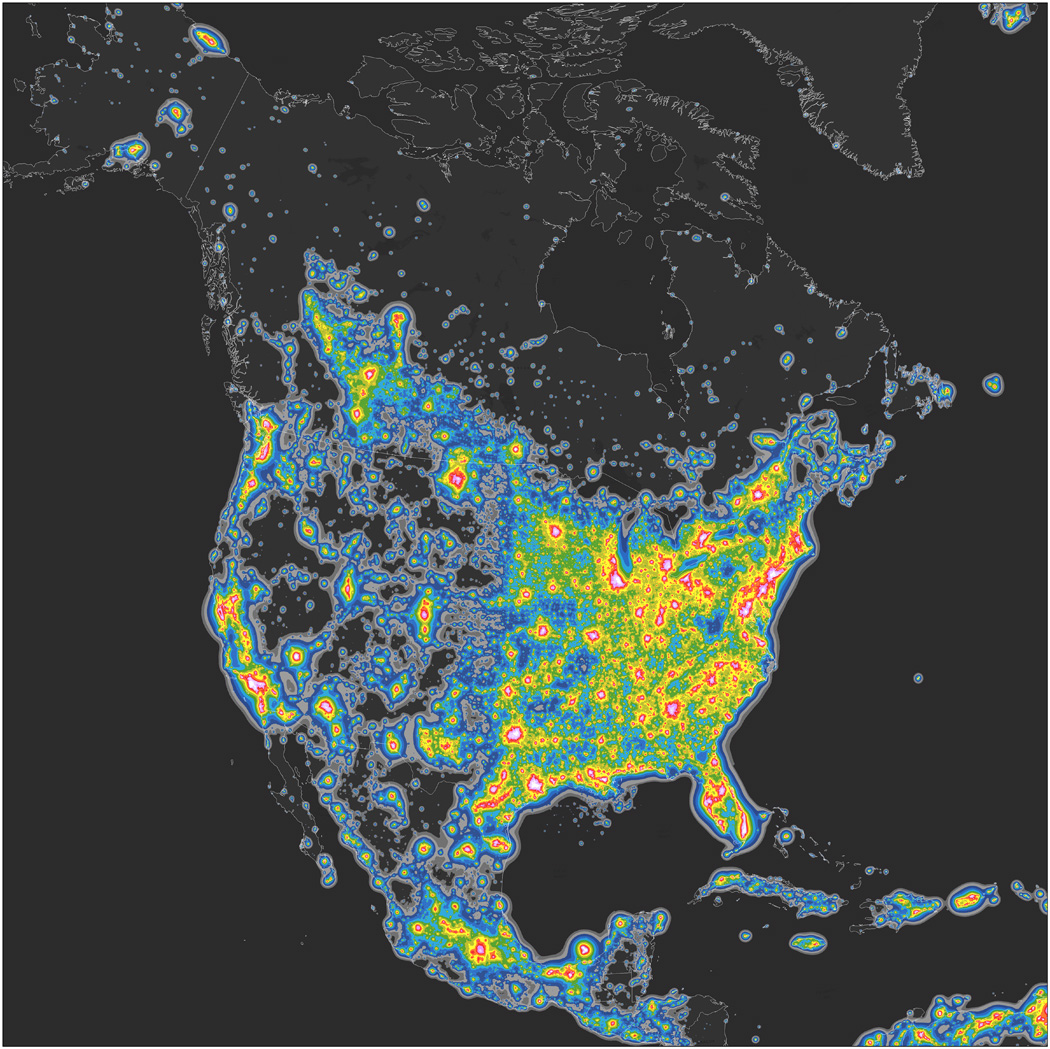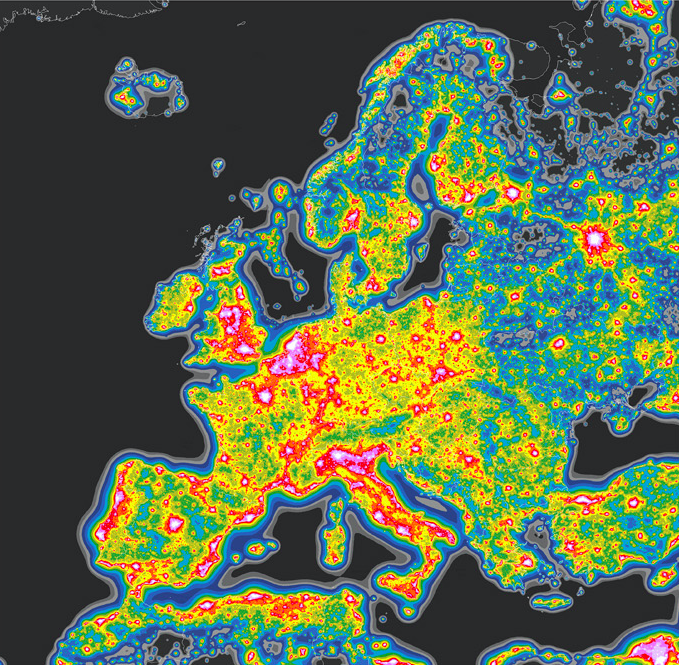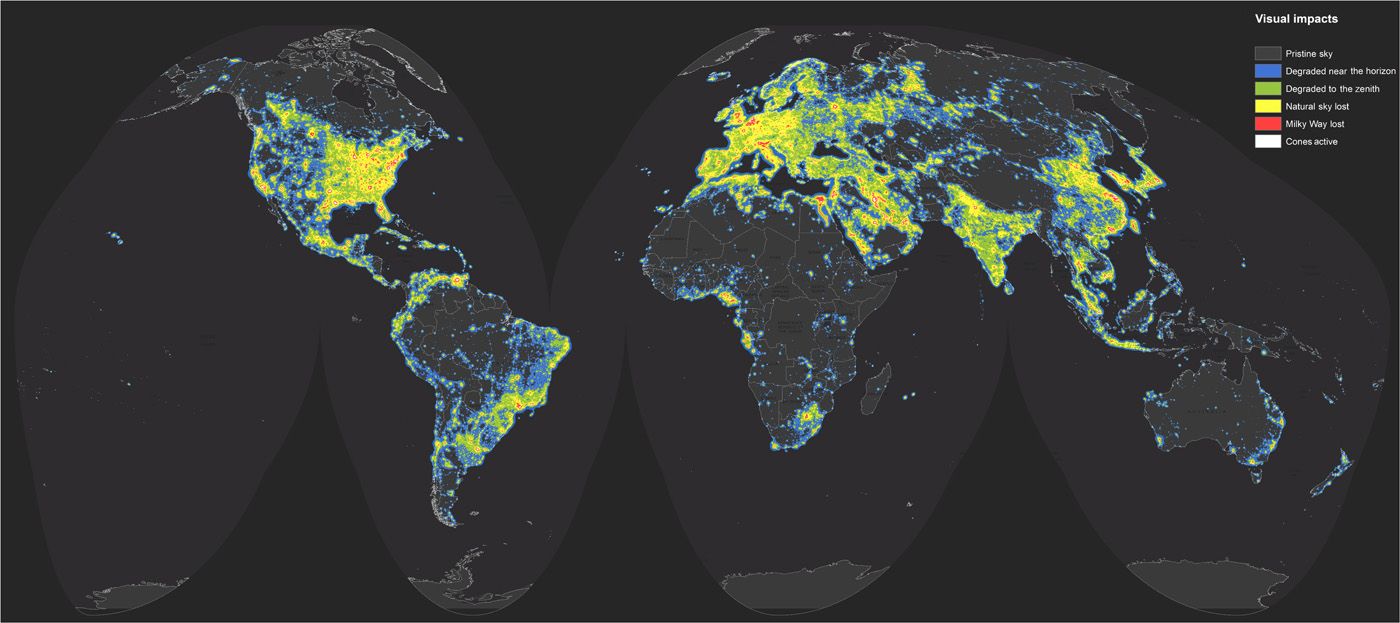The World Has a Light Pollution Problem

By:
The night sky is disappearing and it's causing all kinds of problems for people and wildlife alike, a new study published in the journal Science Advances finds.
Light pollution — luminance from manmade sources — is obscuring our view of the stars on a global scale, a team of international researchers concluded. The problem has gotten so bad that one-third of the world and a whopping 80 percent of North America can no longer view the Milky Way at night.
See for yourself.
The map below is the first visualization of light pollution in North America. The areas with color represent parts of the continent where the Milky Way is not visible at night due to artificial light, with the most intense light pollution appearing red and white.
 Science Advances - sciencemag.org
Science Advances - sciencemag.org
"This has a consequent potential impact on culture that is of unprecedented magnitude," the study authors wrote. "Moreover, light pollution causes global ecological consequences, poses public health issues, and wastes energy and money."
Yes, light pollution affects more than your view of the stars. Vox argues that light pollution can even "diminish our sense of the universe," which is an interesting philosophical take that you can read more about here. It can directly impact nocturnal ecosystems, too. Think about birds that fly at night as part of their natural migratory habit.
"When they fly through a brightly-lit area, they become disoriented," Michael Mesure, the executive director of the Fatal Light Awareness Program (FLAP), told National Geographic. "Over 450 bird species that migrate at night across North America are susceptible to collisions with night-lit towers, including threatened or endangered species like the cerulean warbler and Henslow's sparrow."
As you can see from the map below, this isn't an exclusively American problem: 60 percent of Europe is too light polluted to see the Milky Way.
 Science Advances - sciencemag.org
Science Advances - sciencemag.org
And here's what artificial light looks like from a global perspective.
 Science Advances - sciencemag.org
Science Advances - sciencemag.org
"The new atlas provides a critical documentation of the state of the night environment as we stand on the cusp of a worldwide transition to LED technology," Fabio Falchi, the lead author of the study, said in a press release. "Unless careful consideration is given to LED color and lighting levels, this transition could unfortunately lead to a 2-3 fold increase in skyglow on clear nights."
